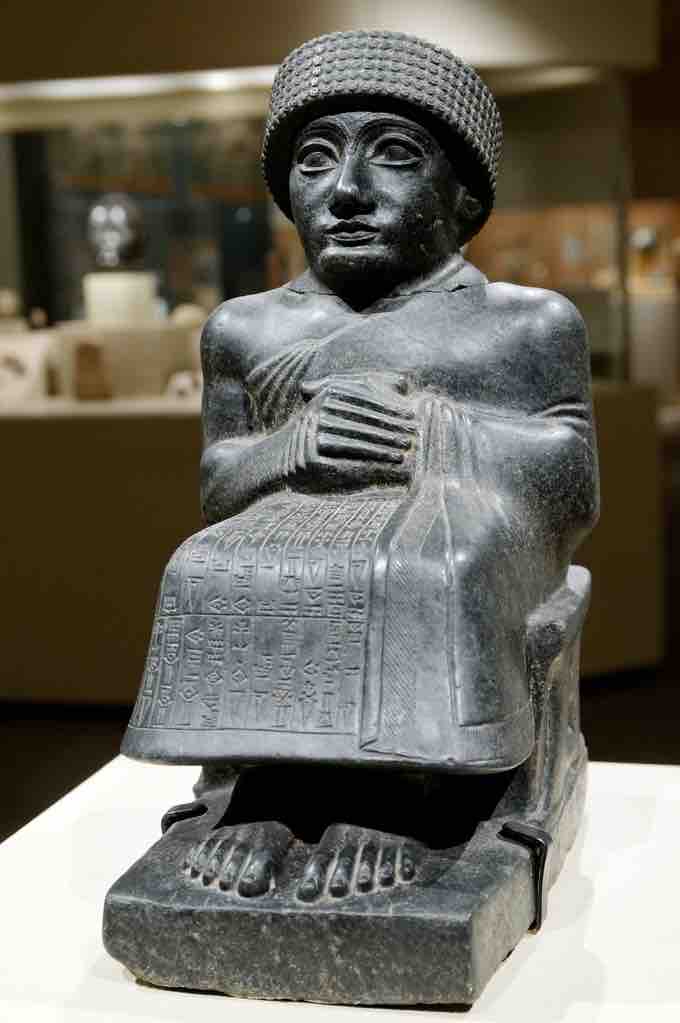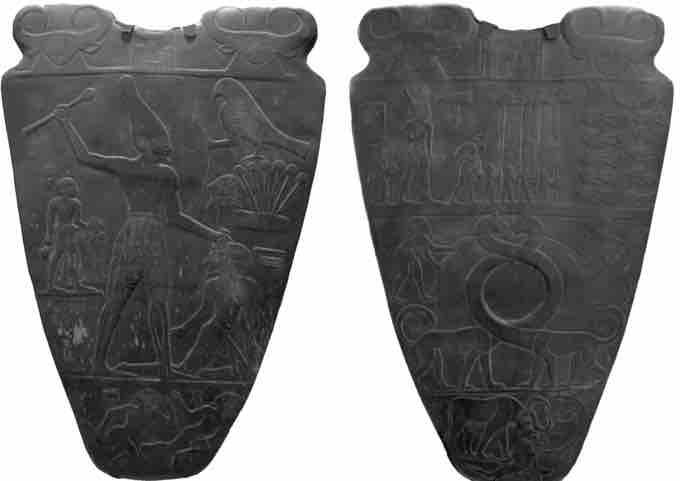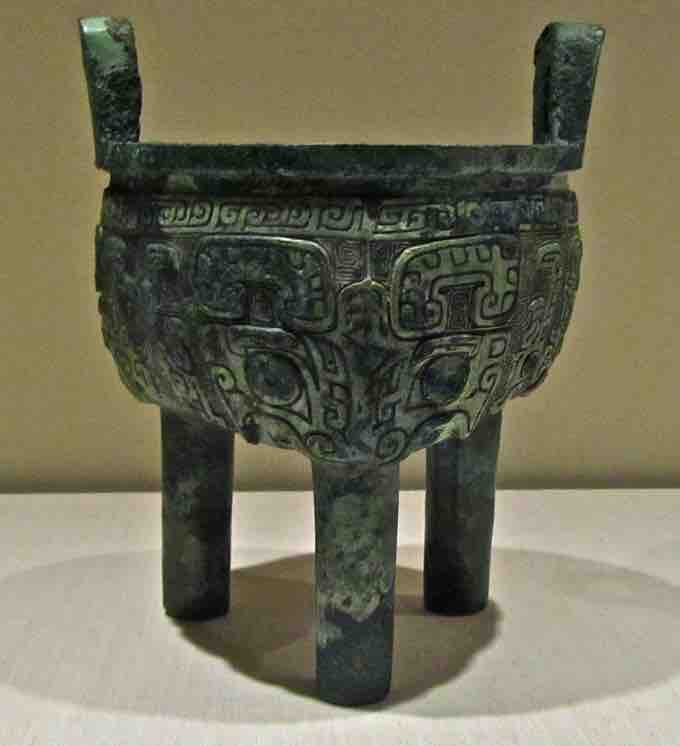The Bronze Age
The Bronze Age is part of the three-age system of archaeology, which divides human technological prehistory into three periods: the Stone Age, Bronze Age, and Iron Age. The Bronze Age spanned from 3,300 to 1,200 BCE and is characterized by the use of copper and its alloy bronze as the chief hard materials in the manufacturing of implements and weapons. This period ended with further advancements in metallurgy, such as the ability to smelt iron ore.
Bronze castings
Assorted bronze Celtic castings dating from the Bronze Age, found as part of a cache, probably intended for recycling. Somerset County Museum, Taunton, UK.
The Bronze Age is the earliest period for which we have direct written accounts, since the invention of writing coincides with its early beginnings. Bronze Age cultures differed in their development of the first writing. According to archaeological evidence, cultures in Egypt (hieroglyphs), the Near East (cuneiform), and the Mediterranean, with the Mycenaean culture (Linear B), had viable writing systems.
Linear B inscription
This fragment from the Mycenaean palace of Pylos contains information on the distribution of bovine, pig, and deer hides to shoe and saddle-makers. Linear B was the earliest Greek writing, dating from 1450 BCE, an adaptation of the earlier Minoan Linear A script. The script is made up of 90 syllabic signs, ideograms and numbers. This and other tablets were fortuitously preserved when they were baked in the fire that destroyed the palace around 1200 BCE. It is on display at the National Archaeological Museum of Athens.
The Art of the Bronze Age: Ancient Near East
Cultures in the ancient Near East (often called the Cradle of Civilization) practiced intensive year-round agriculture, developed a writing system, invented the potter's wheel, created a centralized government, law codes, and empires, and introduced social stratification, slavery, and organized warfare. Societies in the region laid the foundations for astronomy and mathematics. From Mesopotamia came the empires of Sumeria, Babylon, and Assyria. From the fertile floodplains of the Nile emerged the Egyptians, with their great monuments and sophisticated society. From the Iranian Plateau came the Medes and then the Persians, who nearly succeeded in uniting the entire civilized world under one empire. In Mesopotamian Babylonia, an abundance of clay and lack of stone led to greater use of mud brick. Babylonian temples were massive structures of crude brick, supported by buttresses, the rain being carried off by drains. The use of brick led to the early development of the pilaster, column, frescoes, and enameled tiles. The walls were brilliantly colored and sometimes plated with zinc or gold, as well as with tiles. Painted terra cotta cones for torches were also embedded in the plaster. In Babylonia, in place of the bas-relief, there was greater use of three-dimensional figures—the earliest examples being the Statues of Gudea, which are realistic if somewhat clumsy. The paucity of stone in Babylonia made every pebble precious, and led to a high perfection in the art of gem cutting.

Statue of Gudea
Neo-Sumerian period, circa 2090 BCE.
In Ancient Egypt, the Bronze Age begins in the Protodynastic period, circa 3,150 BCE. The hallmarks of ancient Egyptian civilization, such as art, architecture and many aspects of religion, took shape during the Early Dynastic period—lasting until about 2,686 BCE. During this time period, the pantheon of the gods was established. The illustrations and proportions of their human figures were developed; and Egyptian imagery, symbolism, and basic hieroglyphic writing were created. During the Old Kingdom, from 2686-2181 BCE, the Egyptian pyramids were built. Sculptures that appeared more natural were built as well. The first known portraits were completed. It was at the end of the Old Kingdom that the Egyptian style made a shift toward formalized seminude figures with long bodies and large eyes.

Reverse and obverse sides of Narmer Palette, this facsimile on display at the Royal Ontario Museum in Toronto, Canada
The Narmer Palette, named after Egyptian King Narmer, is a significant Egyptian archeological find, dating from about the 3,100 BCE, containing some of the earliest hieroglyphic inscriptions ever found.
The Art of the Bronze Age: East Asia
In the East, civilization emerged in the Indus River valley, and from the Yellow River came the beginnings of Chinese civilization. The Chinese bronze artifacts are generally either utilitarian, like spear points or adze heads, or "ritual bronzes," which are more elaborate versions in precious materials of everyday vessels, as well as tools and weapons. Examples are the numerous large sacrificial tripods known as dings in Chinese. There are many other distinct shapes. Ritual bronzes were highly decorated with taotie motifs , including highly stylized animal faces, in three main motif types: demons, symbolic animals, and abstract symbols. Many large bronzes also bear cast inscriptions that are the great bulk of the surviving body of early Chinese writing, and have helped historians and archaeologists piece together the history of China.

Ritual cooking vessel
China, Shang or Zhou dynasty bronze, c. 1000 BCE. Taotie - a mask of an imaginary animal with eyes, horns, snout, and jaw. Motif common in Shang and early Zhou dynasties.
The Art of the Bronze Age: Western Europe
The Atlantic Bronze Age is a cultural complex of the period of approximately 1300 to 700 BCE that includes different cultures in Portugal, Andalusia, Galicia, and the British Isles. It is marked by economic and cultural exchange. Commercial contacts extend to Denmark and the Mediterranean. The Atlantic Bronze Age was defined by a number of distinct regional centers of metal production, unified by a regular maritime exchange of some of their products.
Bronze sword blade (c. 800 BCE)
Museum of National Antiques, Saint-Germain-en-Laye, France.
In Great Britain, the Bronze Age is considered to have been the period from around 2100 to 750 BCE. Migration brought new people to the islands from the continent. Recent tooth enamel isotope research on bodies found in early Bronze Age graves indicate that some of the migrants came from the area of modern Switzerland. Burial of dead (which, until this period, had usually been communal) became more individual, with bodies being interred in barrows and cists covered with cairns.
The greatest quantities of bronze objects in England were discovered in East Cambridgeshire—especially in Isleham, where more than 6500 pieces were found. Alloying of copper with zinc or tin to make brass or bronze was practiced soon after the discovery of copper. The earliest identified metalworking site (Sigwells, Somerset) is much later, dated by Globular Urn style pottery to approximately the twelfth century BCE.
The Bronze Age in Ireland commenced around 2000 BCE, when copper was alloyed with tin and used primarily in the field of metallurgy. One of the characteristic types of artifact of the Early Bronze Age in Ireland is the flat axe, notably the Ballybeg-type flat axe. Ireland is also known for a relatively large number of Early Bronze Age burials.